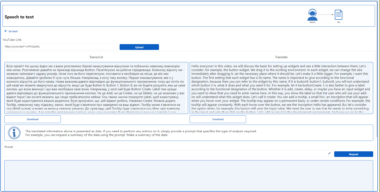Model Context Protocol (MCP) Python Implementation
This project implements a functioning Model Context Protocol (MCP) server and client in Python, following the Anthropic MCP specification. It demonstrates the key patterns of the MCP protocol through a simple, interactive example.
What is MCP?
The Model Context Protocol (MCP) is an open standard built on JSON-RPC 2.0 for connecting AI models to external data sources and tools. It defines a client-server architecture where an AI application communicates with one or more MCP servers, each exposing capabilities such as:
- Tools: Executable functions that perform actions
- Resources: Data sources that provide information
- Prompts: Predefined templates or workflows
MCP standardizes how these capabilities are discovered and invoked, serving as a “USB-C for AI” that allows models to interact with external systems in a structured way.
Project Structure
server/: MCP server implementationserver.py: WebSocket server that handles MCP requests and provides sample tools/resources
client/: MCP client implementationclient.py: Demo client that connects to the server and exercises all MCP capabilities
Features Demonstrated
This implementation showcases the core MCP protocol flow:
- Capability Negotiation: Client-server handshake via
initialize - Capability Discovery: Listing available tools and resources
- Tool Invocation: Calling the
add_numberstool with parameters - Resource Access: Reading text content from a resource
Setup
Create a virtual environment:
python3 -m venv .venv source .venv/bin/activateInstall dependencies:
pip install -r requirements.txt
Usage
Start the MCP server (in one terminal):
python server/server.pyRun the MCP client (in another terminal):
python client/client.py
The client will connect to the server, perform the MCP handshake, discover capabilities, and demonstrate invoking tools and accessing resources with formatted output.
How It Works
MCP Server
The server:
- Accepts WebSocket connections
- Responds to JSON-RPC requests following the MCP specification
- Provides a sample tool (
add_numbers) - Provides a sample resource (
example.txt) - Supports the MCP handshake and capability discovery
MCP Client
The client:
- Connects to the server via WebSocket
- Performs the MCP handshake
- Discovers available tools and resources
- Demonstrates calling a tool and reading a resource
- Presents the results in a formatted display
Protocol Details
MCP implements these key methods:
| Method | Description |
|---|---|
initialize | Handshake to establish capabilities |
tools/list | List available tools |
tools/call | Call a tool with arguments |
resources/list | List available resources |
resources/read | Read resource content |
prompts/list | List available prompts |
Extending the Project
You can extend this implementation by:
- Adding more tools with different capabilities
- Adding dynamic resources that change on each read
- Implementing prompt templates for guided interactions
- Creating more interactive client applications
References
- Anthropic Model Context Protocol Spec
- JSON-RPC 2.0 Specification
- WebSockets Protocol
Python MCP Server
Project Details
- suspicious-cow/MCP2
- Last Updated: 5/12/2025
Recomended MCP Servers
An MCP Server implementation that integrates the Brave Search API, providing, Web Search, Local Points of Interest Search,...

Model Context Protocol server for Replicate's API
A Model Context Protocol (MCP) server implementation for comprehensive code analysis. This tool integrates with Claude Desktop to...
simple logseq mcp server

The official Redis MCP Server is a natural language interface designed for agentic applications to manage and search...
mcp demo, get US weather, deploy to smithery

 From vibe coding to vibe deployment. UBOS MCP turns ideas into infra with one message.
From vibe coding to vibe deployment. UBOS MCP turns ideas into infra with one message.






